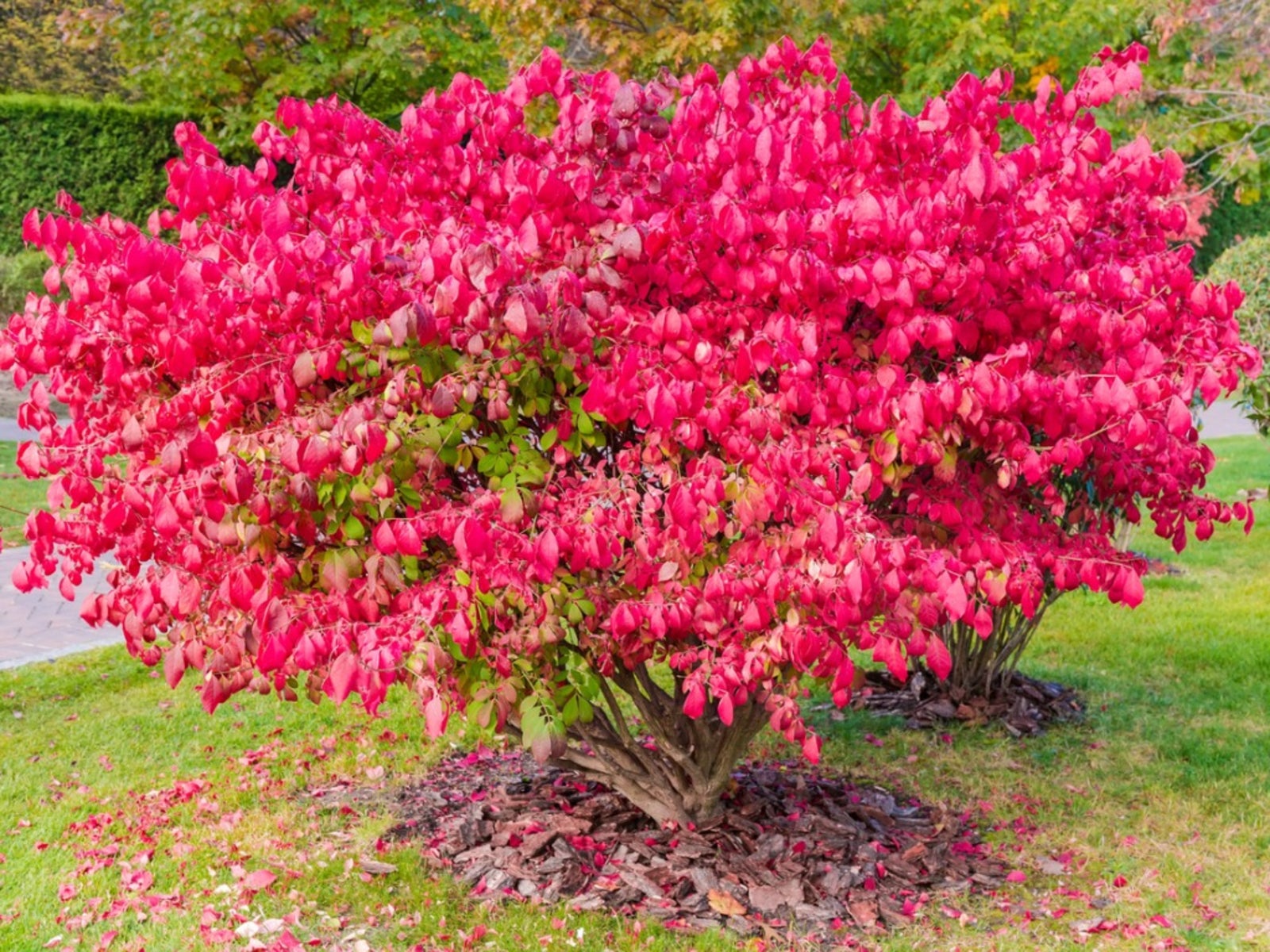Insects On Burning Bush Leaves – How To Treat Bugs On Burning Bush Plants


Burning bush shrubs have so much to recommend them: undemanding nature, brilliant fall color, naturally attractive shape…the list goes on and on. One of the problems you may have with these beautiful shrubs is insect pests. This article tells you what to do when you see insects on burning bush leaves.
Identifying Bugs That Eat Burning Bush
Healthy burning bush plants don’t have a lot of problems with insects, but under the right circumstances, any plant can come under attack. Monitor the overall health of the plants and watch for insects and leaves that show evidence of insect feeding. Try to identify the problem before treating the pests of burning bush shrubs.
- Spider mites are a problem in dry climates or during long dry spells. You may see webs, but the spider mites themselves are very hard to see on the plant. Try shaking the foliage over a white sheet of paper to shake loose the tiny, spider-like specks.
- Euonymus caterpillars create an abundance of webbing where they hide and feed. These yellowish caterpillars can defoliate a shrub. Although defoliation isn’t usually fatal, it weakens the plant, and repeated defoliation makes it susceptible to other insects as well as diseases.
- Scale insects might look more like a growth on a plant than an insect because they hardly ever move, and scale hide under hard shells. Leaves shrivel and turn yellow in heavy infestations.
- Aphids are tiny, soft-bodied insects that accumulate at the base of the leaves and on the leaf stems. Aphids create an abundance of black spots as a result of sooty mold infesting the sticky secretions the aphids leave behind as they feed.
- Black vine weevils are flightless insects that resemble beetles. Black vine weevils leave ragged edges as they feed on the leaves.
How to Treat Bugs on Burning Bush
Spider mites sometimes respond to a blast of water from a hose. If you find that this isn’t enough, treat the shrub with horticultural oil or insecticidal soap. Euonymus caterpillars respond to Bacillus thuringiensis. Remove the webbing before treating the plant. You may be able to treat a small infestation with a blast from a water hose. Try treating a small infestation of scale insects by spraying with insecticidal soap and then scraping off the insects with your thumbnail. Treat heavy infestations by pruning out the affected areas. You can also try treating the pest with horticultural oil. This method only works when the insects are in the crawling phase of their life cycle before they hide under their shells. Aphids respond temporarily to neem oil, horticultural oil, or insecticidal soap. You’ll have to spray repeatedly at the interval indicated on the label to keep them at bay. Fortunately, they have a lot of natural enemies. Since black vine weevils can’t fly, you can control them by keeping them from climbing the plant. Paint the bush with a sticky substance such as Tanglefoot in six inch (15 cm.) bands. Some burning bush insect pests, such as scale insects and aphids, have several natural enemies. Take care to preserve these “good insects” by avoiding the use of systemic insecticides. Systemics create a toxic situation that is bad for you and the environment, and they are often more effective at killing beneficial insects than insect pests.
Sign up for the Gardening Know How newsletter today and receive a free copy of our e-book "How to Grow Delicious Tomatoes".

Jackie Carroll has written over 500 articles for Gardening Know How on a wide range of topics.